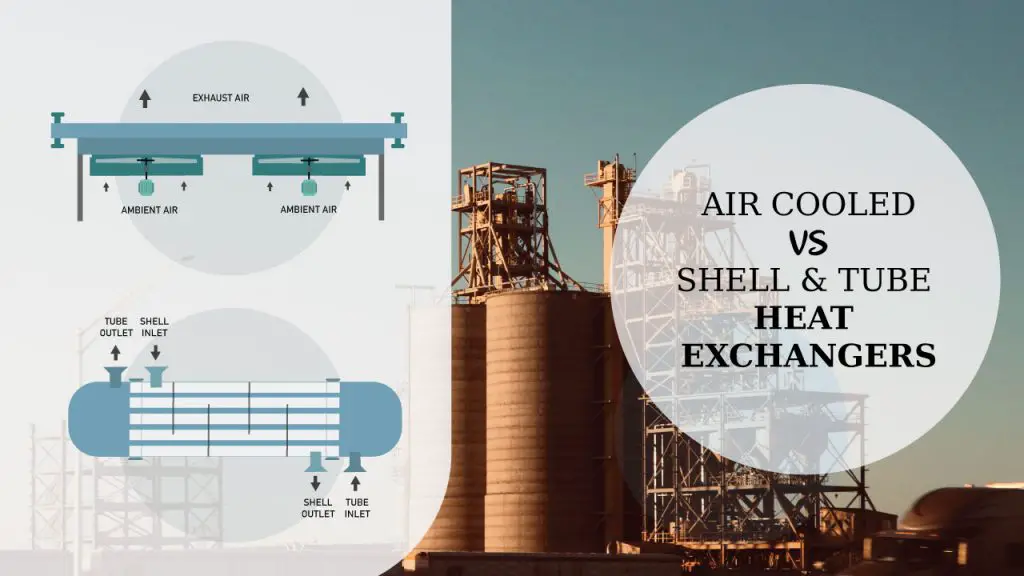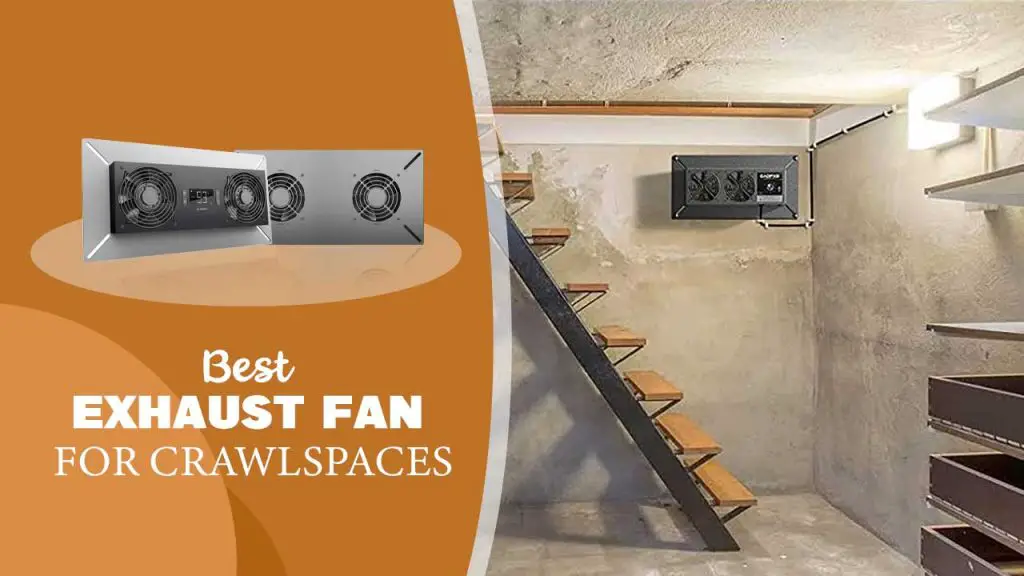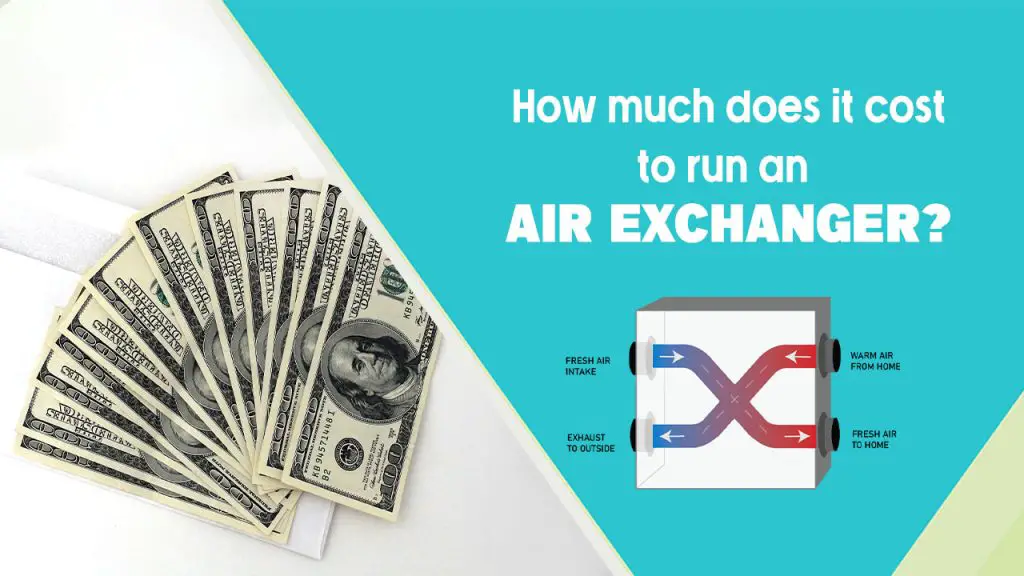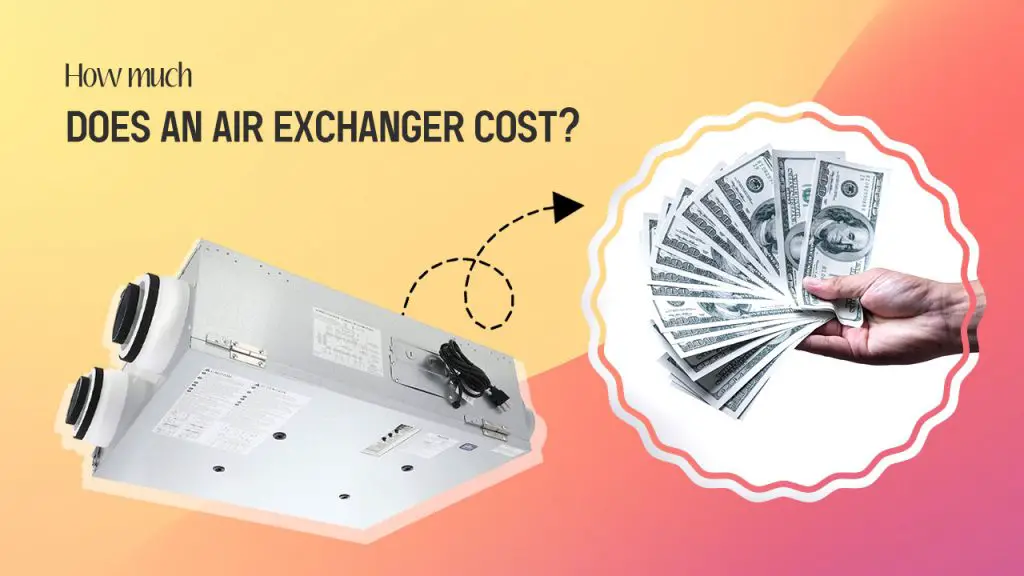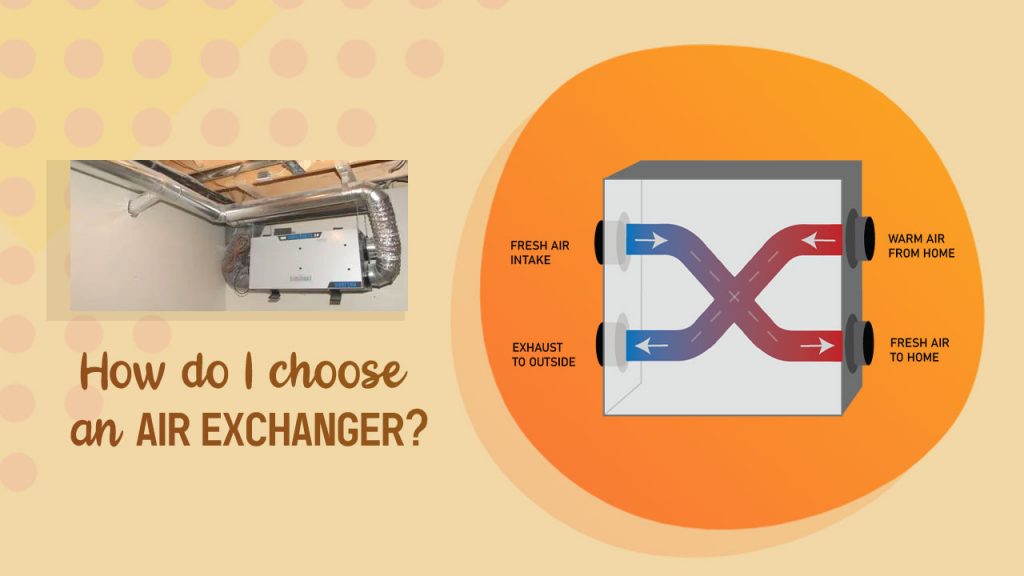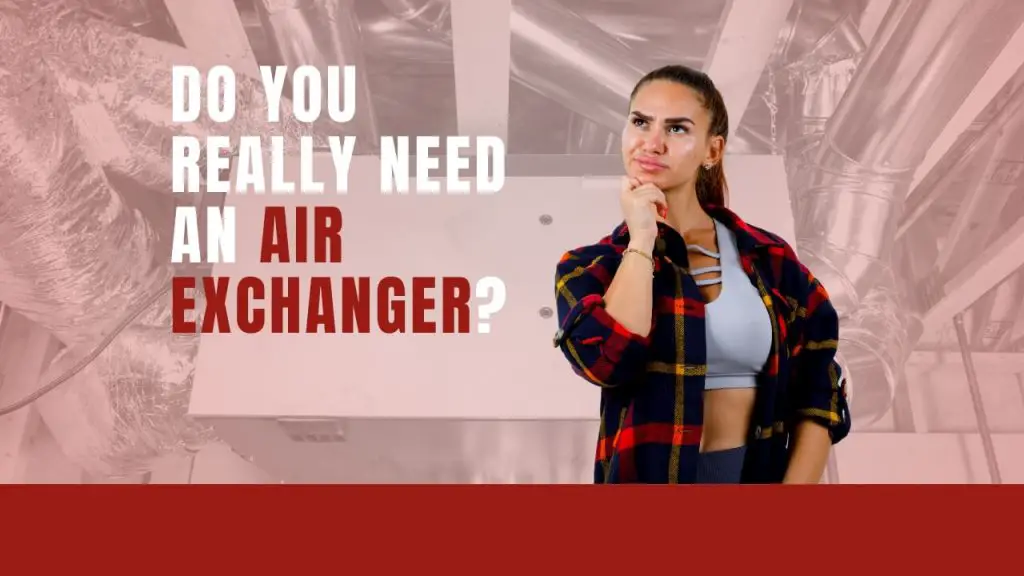As humans, we all need to cool off at some point, especially after tedious work or exercise. We often desire the cool breeze that a fan offers to help us relax and cool off the heat. The same can be said for mechanical systems like cars as well as electronic appliances.
This entire process of introducing cool air in an area or body is what we often call air cooling. Oftentimes, what we need is an appliance that can exchange the heat between incoming and outgoing air.
Consider large industries operate big machines and equipment that generate a huge volume of heat and for these machines to operate at an optimal level, the heat needs to be kept out. To do this, these industries use Heat exchangers.
So, what exactly is a heat exchanger and what does it do? Simply put, it transfers heat from one region to another. This is referred to as the heat transfer process.
This post focuses on details related to Air Cooled Heat Exchanger Vs Shell & Tube Heat Exchanger; The two types of popular heat exchangers, including their similarities and differences.
Air Cooled Heat Exchangers
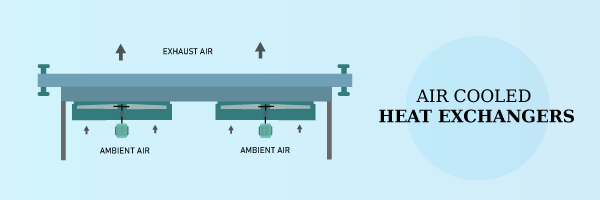
Air Cooled Heat Exchanger (ACHE) is a device used for heat expulsion. It is simply a heat rejection equipment that expels the excess processed heat into the atmosphere.
The ACHE follows the principle of convection and conduction in its task of dissipating heat from the process fluid into the air.
By actively selecting the tube material, this heat exchanger is able to effectively cool and/or condense chemicals, processed water, or any other type of heat transfer fluid.
What is the purpose of an air-cooled heat exchanger?
Air Cooled Heat Exchanger (ACHE) has several purposes. One of the primary purposes is its ability to transport heat from one point to another. That is, it removes heat from process fluid and releases it into the surrounding air.
Another purpose is that the Air-Cooled Heat Exchanger enhances the efficiency of a system.
Advantages of an air-cooled heat exchanger
1. Environmentally friendly
Heat exchangers, generally compared to other standard cooling methods, barely have any negative effect on the environment. It uses less energy and has little or no risk when it comes to polluting the environment. This makes them an eco-friendly option.
2. High heat transfer
Compared to some other heat exchangers, the Air-Cooled Heat Exchanger has a very high and efficient heat transfer rate. Its heat coefficient is about five times that of the Shell-and-tube heat exchanger.
3. Zero water wastage
Air-cooled heat exchangers do not require the use of water for cooling, and this makes it more economical. If your building is in an area where water is a problem, you’ve got yourself a good deal.
When should you use an air-cooled heat exchanger?
The air-cooled heat exchanger is more beneficial to use when you are in arid regions. Water in arid locations requires treatment before it can be used.
This implies extra cost, but the use of the air-cooled heat exchanger helps you avoid this extra cost as it does not require water for cooling; not forgetting that you do not have to bother so much with laws and regulations in regions that pay attention to the use of water as well as the discharge of effluent streams.
Shell and Tube Heat Exchangers
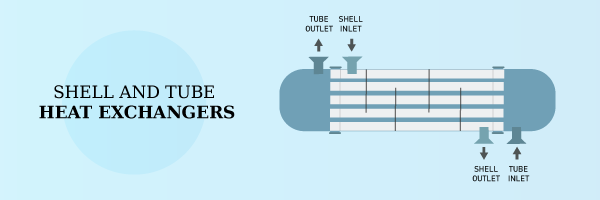
Shell and Tube Heat Exchangers, by design, transfers heat from one fluid to another. The fluid can be in the form of oil or gas. It is a type of heat exchanger that features a cylinder carrying one specific fluid, along with other smaller cylinders carrying another type of fluid.
The shell and tube heat exchangers are commonly used in oil refineries and chemical processing factories and, as described above, it is a large vessel with several tubes on the inside. These tubes are built from materials such as aluminum alloys and steel.
By design, the shell and tube heat exchanger allows the passage of hot fluids through cold fluids without mixing them up. It allows two working fluids (of different temperatures) to exchange heat only by thermal contact.
What is the purpose of a shell and tube heat exchanger?
Like other heat exchangers, the shell and tube heat exchanger’s core purpose is cooling, and it is very useful for transferring heat from one fluid to another.
This type of heat exchanger is commonly used for the cooling application of hydraulic fluids and oil in mechanical engines.
This is what makes it possible for complex engines like those of most vehicles to function properly without breaking down unnecessarily unless there’s a breakdown of the heat-exchange mechanism.
Advantages of a shell and tube heat exchanger
1. Durability
The shell and tube heat exchangers can serve for a very long time thereby saving time and resources.
2. Easy Maintenance
Shell and tube exchangers are easy to dismantle. This makes routine cleaning and repairs easy to carry out.
3. Optimal Solution
Shell and tube exchangers are the ideal solution for hydraulic power packs, swimming pool heating, hydraulic fluids, etc.
4. Large Capacity
A major advantage of shell and tube exchangers is the fact that the capacity can be increased. This is achieved by adding plates in pairs.
5. Heat Transfer Efficiency
Shell and tube heat exchangers are known to be highly efficient when it comes to heat transfer and can be easily used in systems that have high temperatures and pressure.
When should you use a shell and tube heat exchanger?
Shell and tube heat exchangers are best for use when you need cooling solutions in industrial process applications such as cooling of hydraulic fluid and oil in engines, swimming pool heating, and more.
Generally, they’re suitable for large areas with simple or complex mechanical processes.
Furthermore, you can use this heat exchanger in places where water supply is not a problem. This is because they require water to work.
Air-Cooled Heat Exchanger Vs A Shell & Tube Heat Exchanger [Key Differences]
A major difference between the air-cooled heat exchanger and the shell and tube heat exchanger is their working principle.
The air-cooled heat exchanger employs the principle of convection and conduction to disperse heat from process fluid to air. That is, while the process fluids transport through the tubes, air steams pass over the tubes, thereby dispersing the heat. The fans installed in the unit creates the air steams.
On the other hand, the shell and tube heat exchanger employs a different principle. While one fluid runs within the tubes, the other fluid flows within the shell. This way, the two fluids exchange heat as they flow; while the cold fluid is heated up.
Which Is Better? Air-Cooled Heat Exchanger Or Shell & Tube Heat Exchanger?
Both the air-cooled heat exchanger and the shell and tube heat exchanger are great. However, we would recommend the air-cooled heat exchanger.
A major reason is the fact the air-cooled heat exchanger has the zero-water use advantage. This makes it very economical and makes maintenance easy.
Imagine what you will be saving on investment and routine maintenance if you find yourself in an arid or semi-arid location.
Final Words
Heat exchangers regardless of design are very efficient for heat transfer. A great benefit to using heat exchangers is the fact that they do not rely on other cooling equipment to operate.
This makes them cost-effective and energy-friendly. Also, their impact on the environment is very minimal, their designs are not complicated, they last for a very long time, and they barely need repairs.
While both heat exchangers discussed are ideal for heat transfer, the air-cooled heat exchanger is highly recommended for arid regions. It is ideal because it uses the atmospheric air as coolant thereby not requiring water to cool. This, in turn, saves a lot on investment and running costs.
| Photo | Title | Buy |
|---|---|---|

|
LEVOIT Air Purifier for Home & Bedroom - For Allergies and Pets Hair | Check Price On Amazon |

|
BREEZOME 60 OZ Quiet Dehumidifiers for Home, Dual-Semiconductor | Check Price On Amazon |

|
AquaOasis™ Cool Mist Quiet Ultrasonic Humidifier for Bedroom & Large room | Check Price On Amazon |

|
43.3'' Portable Air Conditioners, 3-IN-1 Evaporative Air Cooler w/Remote | Check Price On Amazon |

|
BlueDri BD-AS-550-BL Negative Machine Airbourne Cleaner HEPA Air Scrubber | Check Price On Amazon |

|
Space Heater, VCK 24" 12ft/s Fast Quiet Heating Portable Electric Heater | Check Price On Amazon |
